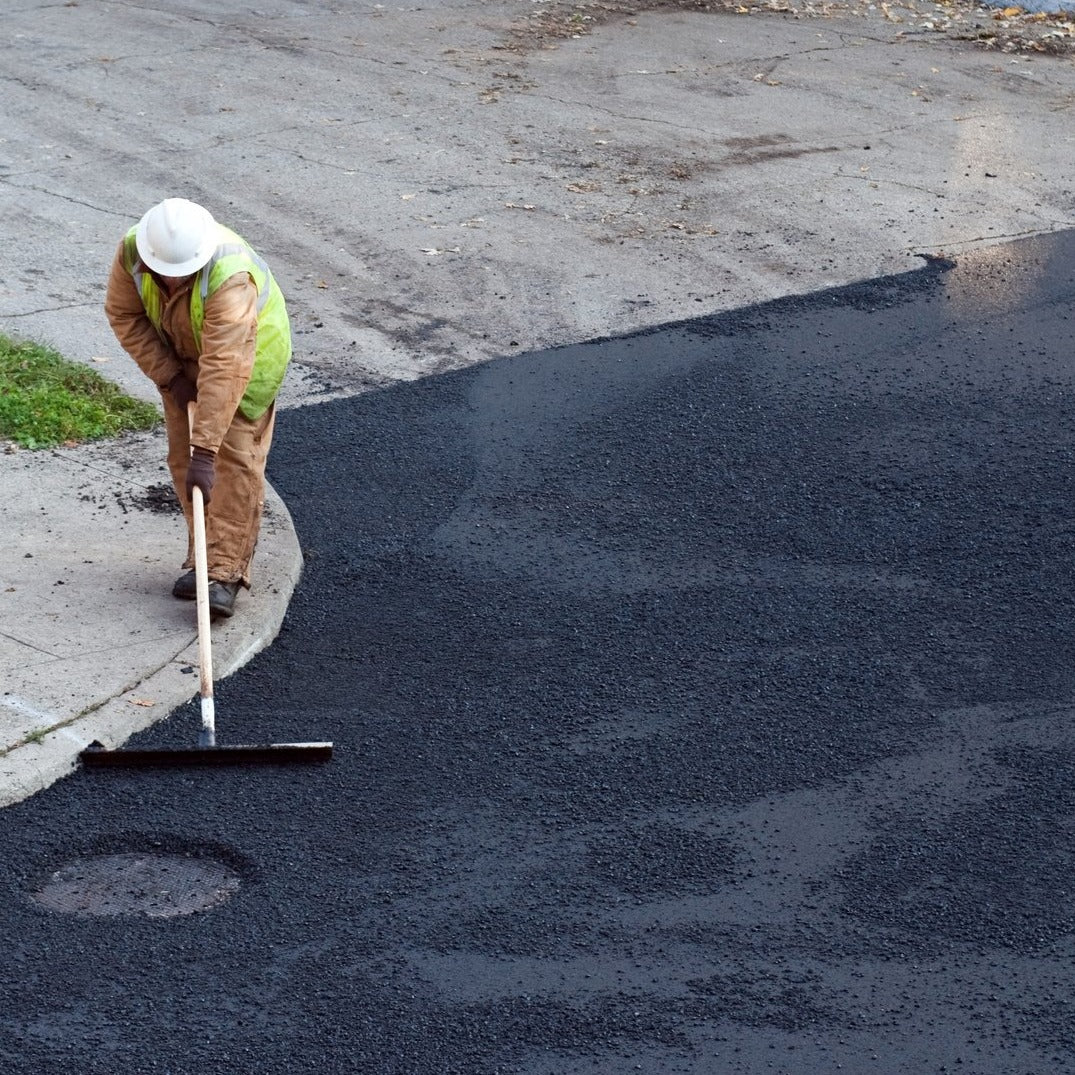Hot Mix Asphalt Paving: Elevating Commercial Parking Lot Specifications
Hot Mix Asphalt Paving: Elevating Commercial Parking Lot Specifications
Blog Article
Unlocking the Tricks of Hot Mix Asphalt Innovation
Exploring the midsts of hot mix asphalt innovation uncovers a world where meticulous procedures and accurate formulations assemble to form our roads and framework. The blend of fillers, accumulations, and binders isn't merely a building and construction task however a strategic orchestration of toughness and efficiency.
Relevance of Hot Mix Asphalt
Hot Mix Asphalt plays a crucial function in modern infrastructure advancement because of its sturdiness and cost-effectiveness. As one of the most frequently used paving product for roads, highways, and car park, Warm Mix Asphalt provides a variety of benefits that add to its significance in construction tasks. One essential advantage is its capacity to withstand heavy web traffic lots and severe weather, providing a lasting and trusted surface area for transportation networks. Furthermore, Warm Mix Asphalt is cost-effective in both first construction and lasting maintenance, making it a recommended selection for lots of infrastructure projects.
The longevity of Hot Mix Asphalt originates from its composition, which consists of accumulations, binder, and filler products that are thoroughly selected and blended to meet specific efficiency needs. This accurate combination causes a flexible and strong sidewalk that can endure constant use without substantial deterioration. Moreover, Warm Mix Asphalt is 100% recyclable, more boosting its sustainability and ecological advantages. In general, the importance of Hot Mix Asphalt in facilities advancement can not be understated, as it proceeds to be a keystone of contemporary building practices.
Elements of Asphalt Mixes
The make-up of asphalt blends consists of very carefully picked accumulations, binder, and filler materials that are crucial for achieving certain efficiency requirements. Aggregates are the main element of asphalt mixes, providing stamina and stability. The binder, typically asphalt or asphalt concrete, holds the aggregates together and provides adaptability and resilience to the mix.
The mix and percentage of these elements play a substantial role in figuring out the high quality and efficiency of the asphalt mix. Designers very carefully design the mix to fulfill particular needs, taking into consideration elements like website traffic volume, climate conditions, and pavement lifespan. Proper option and balancing of accumulations, binder, and fillers are crucial for creating durable, long-lasting asphalt pavements.
Mixing and Production Techniques

As soon as the accumulations are picked, the binder, typically asphalt concrete, is contributed to bind the products with each other. The binder's quality and amount dramatically affect the mix's toughness, adaptability, and resistance to ecological aspects. Furthermore, fillers like moisturized lime or Portland concrete might be incorporated to boost specific characteristics of the asphalt mix, such as its workability or wetness resistance.
During production, the accumulations and binder are heated up, typically in between 250-325 ° F(121-163 ° C ), to help with blending and make sure proper layer of the accumulations. The blending process has to be thorough to accomplish an uniform mixture that promotes the desired efficiency characteristics of the asphalt. Various methods, such as set blending or drum blending, are employed to accomplish top quality and consistent asphalt blends for construction jobs.
Aspects Impacting Asphalt Performance
Aspects affecting asphalt efficiency incorporate a range of variables that affect the longevity, longevity, and total high linked here quality of asphalt pavements. One crucial aspect is the top quality of materials utilized in the asphalt mix. The type and source of accumulations, the binder high quality, and the ingredients all play a considerable duty in determining the performance of the asphalt pavement. The rank of accumulations is crucial as it affects the mix's security, workability, and resistance to cracking and rutting.

Style considerations, such as sidewalk thickness and water drainage, are necessary in making sure the long-lasting efficiency of the asphalt pavement. By thoroughly considering these specialists, elements and designers can optimize asphalt performance and enhance the service life of pavements.
Sustainable Practices in Asphalt Innovation

Furthermore, the growth of warm-mix asphalt (WMA) modern technologies has obtained traction recently. WMA enables the manufacturing and positioning of asphalt mixes at reduced temperature levels contrasted to standard hot-mix asphalt, leading to reduced power usage and greenhouse gas emissions. The use of permeable asphalt mixes can help alleviate stormwater runoff problems by allowing water to infiltrate through the sidewalk and into the ground, advertising natural water filtration and reenergize processes. By carrying out these sustainable methods, the asphalt market can add to developing a much more resilient and environmentally friendly framework network.
Verdict
In verdict, hot mix asphalt innovation plays a critical duty in modern facilities advancement due to its sturdiness and cost-effectiveness. By very carefully balancing parts, employing correct blending methods, and thinking about various variables, designers can create premium asphalt blends that endure hefty website traffic tons and severe climate condition. Accepting sustainable methods, such as using recycled materials and warm-mix innovations, better boosts the click to read ecological friendliness of asphalt technology.
Mixing and manufacturing techniques in warm mix asphalt modern technology entail the accurate combination and processing of aggregates, binder, and fillers to develop a resilient and high-performance asphalt mix.Aspects affecting asphalt performance include an array of variables that influence the resilience, longevity, and total quality of asphalt pavements. Sustainable methods in asphalt modern technology include different efforts aimed at lowering the environmental impact of asphalt manufacturing and paving procedures. By incorporating reclaimed asphalt pavement (RAP) and recycled asphalt tiles (RAS) right into brand-new asphalt mixes, the industry can considerably reduce the consumption of raw products and energy, while also decreasing land fill waste.
WMA permits for the manufacturing and placement of review asphalt blends at lower temperatures contrasted to conventional hot-mix asphalt, resulting in decreased power usage and greenhouse gas emissions.
Report this page